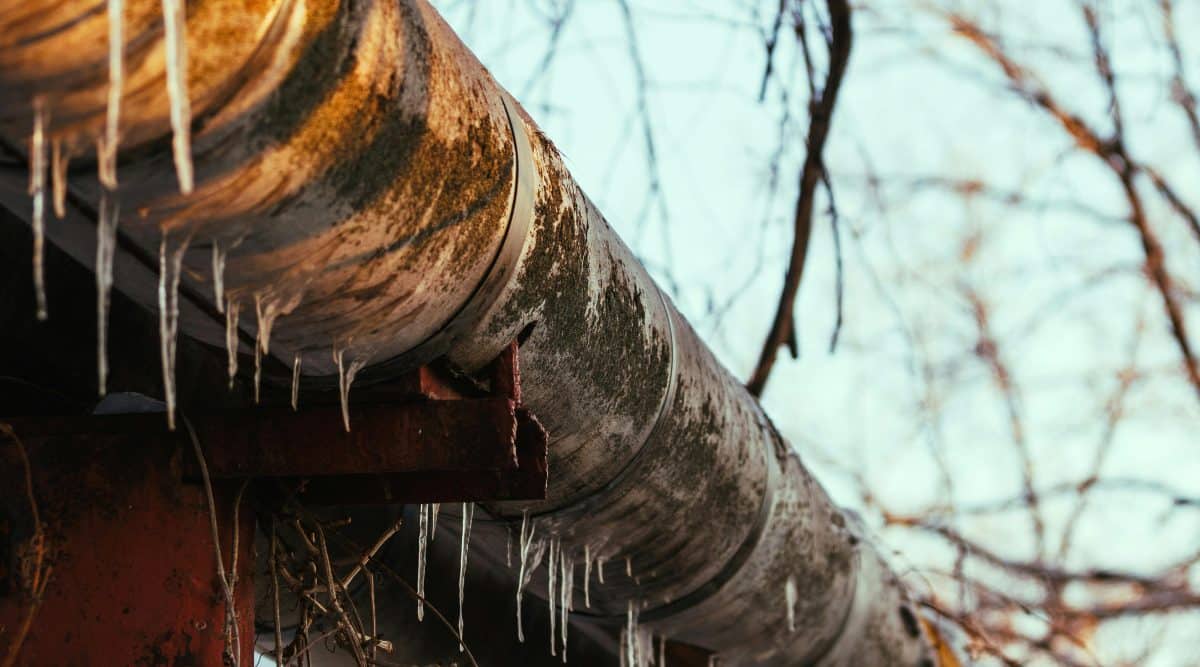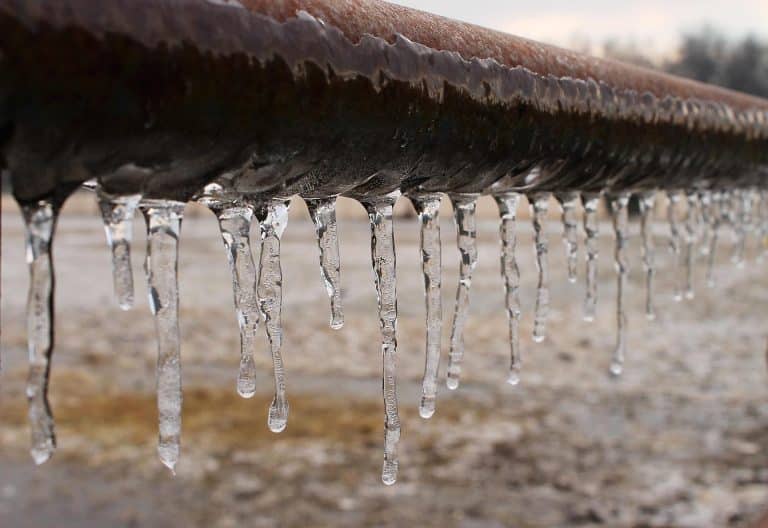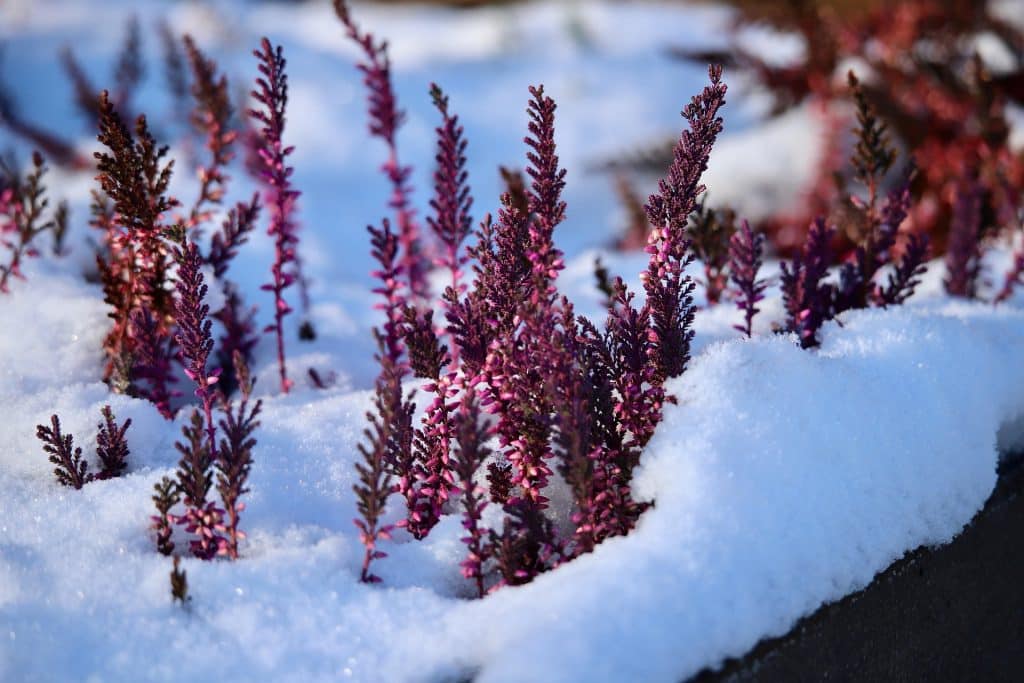Frozen pipes in Sonoma County? Here’s how to prevent and fix them. Cold snaps, even in mild climates, pose danger when water in pipes falls below freezing. Pipes in garages, attics, or outside walls are most susceptible to freezing. Because many homes in Sonoma County utilize exposed pipes, we’re especially vulnerable to pipes freezing during the winter. Fixing frozen pipes typically requires immediate attention to prevent flooding and costly repairs. Basic tactics such as placing pipe wraps or leaving a faucet dripping prevent freezing. For pipes that already froze, safe thawing keeps things from getting even worse. The following parts provide straightforward advice for protecting your pipes and what to do if they freeze.
Key Takeaways
- Know that Sonoma County’s specific climate and topography make you more susceptible to frozen pipes, particularly if you have exposed or under-insulated plumbing.
- Consistently insulate pipes, seal air leaks, and disconnect outdoor hoses to minimize the risk of freezing and water damage.
- Keep your home warm, let the faucets drip in extreme cold, and pay attention to the weather report to protect your system even more.
- If a pipe freezes, immediately turn off the water and cautiously apply heat to prevent bursts and expensive repairs.
- Follow your local building codes and schedule seasonal plumbing checks to keep your home safe and code-compliant all year long.
- Recognize when to call in a professional. Reach out to a licensed plumber for complicated issues and include all members of the household in prevention and emergency strategies.

Sonoma’s Unique Pipe Risk
Sonoma County winters have cold snaps that fall below 0°C, endangering pipes. Nights tend to be colder in valleys or open spaces, and homes situated at higher elevations can experience even lower temperatures. These temperature lows render frozen pipes a very real issue in the winter, especially when the mercury remains low over a few-day span.
Copper or rigid plastic pipes are the most susceptible to freezing. These types don’t like cold very much, particularly if they’re thin or snake along outside walls. Older homes in Sonoma tend to have pipes that are insufficiently insulated, which further increases the risk. Outdoor pipes, like garden hoses or sprinkler lines, are the most likely to freeze. These ought to be disconnected and drained prior to the cold season. Indoors, any pipes located in basements, attics, or crawl spaces are in danger as well, as these areas typically go unheated. When one pipe freezes, close-by pipes can freeze too, turning a small problem into a large one in a hurry.
Proactive Pipe Protection
Frozen pipes are a common danger when temperatures dip below 0°C (32°F), so acting in advance is crucial. Proactive pipe protection decreases the risk of water damage and prevents costly repairs, particularly in areas where cold snaps are less consistent. Prevention can be less expensive than repairing burst pipes, which is why it is smart to insulate, air seal, and check regularly.
1. Insulate
Insulation is the obvious first line of defense against frozen pipes. Pipes in unheated spaces such as attics, basements, crawl spaces, or garages require additional attention. Foam pipe sleeves, heat tape or even thick towels can help prevent cold air from coming into contact with these pipes. Pipes along outer walls are particularly vulnerable, so inspect those first. Take a stroll through your home and identify pipes you can reach or observe. Protect every open run, even small lengths. It’s a great proactive pipe protecting step because by insulating, you slow down heat loss and help keep water inside pipes above freezing.
2. Seal Air Leaks
Cold drafts can creep in through cracks or gaps, putting those pipes at risk. Concentrate on gaps surrounding windows, doors, and the foundation. Seal off these access points with either caulk or weather stripping. Be near sinks and plumbing, just check for air flow and close up any leaks. It’s clever to do this before cold weather kicks in. Inspect each season because materials can shift or deteriorate.
3. Disconnect Hoses
Don’t leave outdoor hoses attached, as water trapped inside may freeze and back up indoors. Prior to winter, be sure to drain your garden hoses and coil them up for storage in a dry place. Don’t overlook outdoor taps and sprinkler systems; drain these as well. Tell everyone in the house this step counts because ignoring it can endanger the entire plumbing network.
4. Maintain Heat
Maintain a constant indoor temperature, not letting it fall below 13°C (55°F), even when away. Open kitchen and bathroom cabinet doors under sinks so that warm air can circulate around the plumbing. A space heater can help in cooler rooms. Monitor your thermostat and do not turn it down at night. The tiny incremental expense can save you from a much bigger issue, like a burst pipe.
5. Allow Drips
A slow, steady drip helps keep water flowing and prevents pipes from freezing. Focus on faucets along exterior walls or those that have frozen before—these are most at risk. Allow both the hot and cold taps to drip. This relieves pressure in the pipes and reduces the chance of a burst. Make sure everyone in your household knows when and how to do this during extreme cold.
What To Do When Pipes Freeze
Pipes freeze once the temperature hits sub-zero and the water inside them becomes solid. This can cause cracks or bursts, so prompt action is important. If you think your pipes are frozen, shut off the water main immediately. This prevents excess water from escaping if a pipe ruptures. Search for the shutoff valve close to the point where the water line comes into your house. If water is not flowing from a faucet or if you hear strange noises in the wall, these are symptoms of freezing.
Carefully thaw the pipe. Your best bet is a hairdryer, moving it back and forth on the pipe. A heating pad wrapped around the pipe can do the trick. Never apply an open flame. Open sink cabinet doors to allow warm air to circulate around pipes. This helps at night when it gets cooler. Exposed pipes, such as those in basements or garages, freeze first. Remember these locations when searching for frozen segments.
Turn on the faucets leading to that frozen pipe. This allows the pressure to decrease and provides water with somewhere to flow as the ice melts. It assists you in knowing when water is flowing again. If only a trickle comes out, leave the tap open. You can prevent this issue in the first place by adding insulation to exposed pipes. Foam pipe sleeves or even a towel wrapped around pipes can keep them warm enough to prevent them from freezing. Insulation is most effective in locations where cold air can gain entry, for example, adjacent to walls or windows.
Local Building Code Insights
Sonoma County’s building codes provide definitive guidelines for plumbing in new and existing structures. There are these standards to help prevent common issues such as frozen pipes, which can result in major repairs. Each plumbing project, whether it’s a single pipe replacement or an extensive remodel, has to comply with local guidelines. This maintains dwellings secure, curtails long-term expenses, and satisfies insurance requirements. Homeowners, builders, and property managers all need to know these rules and check for updates annually, as codes can shift with new risks or improved building practices.
Being up on code updates is important because they frequently echo updated weather patterns and new plumbing materials. For instance, Sonoma County codes mandate that pipes in unconditioned areas, such as attics, crawlspaces, and exterior walls, be adequately insulated. That aligns with global best practice since those spots are most likely to freeze. Insulation choices, such as foam sleeves or fiberglass wraps, maintain pipes above the safe minimum of 13°C (55°F). You’ll want to seal air leaks, as cold drafts in these spaces can cause pipes to freeze even when your indoor living areas are warm.

A Year-Round Sonoma Plan
Year-round plumbing care is essential for homeowners in Sonoma County. Routine inspections can keep you from frozen pipes, leakage, and other expensive problems. As hard water impacts a few homes, descaling and backflow preventer inspections at these regular intervals are wise. A no-fuss plan, with family in the loop, keeps them all in the know and can save you from water damage or a through-the-roof bill.
Winter Watch
- Monitor weather reports for freeze nights. Set the thermostat to a single temperature.
- Use Anti-Freeze. Inspect exposed pipes for cracks or frost, especially in unheated spaces.
- Open cabinet doors below sinks so warm air can circulate around the pipes.
- Keep a slow drip from faucets during hard freezes.
- Store an emergency kit: pipe insulation, a wrench, a flashlight, towels, and bottled water.
It’s important to check pipes in homes with hydronic radiant heat. These systems, present in many of the older Sonoma houses, require additional attention to prevent pipes from freezing or bursting.
Spring Check
Post-winter, a comprehensive plumbing inspection aids in uncovering concealed damage. Make sure your gutters and downspouts are cleared to accommodate snowmelt. Outdoor faucets and irrigation should be checked for leaks or cracked fittings. If anything appears out of whack, book repairs immediately. Spring is a good time to test backflow preventers and look for scale from hard water. So why wait? Upgrading to high-efficiency fixtures now can trim future water bills and repair costs.
Summer Prep
Leaks can lose a lot of water in hot months. Inspect all taps, pipes, and hose bibs for drips. Flush water heaters to clear sediment from winter’s heavy use. This keeps water pure and your heater alive. Irrigation systems require a comprehensive walk-through. Repair broken sprinkler heads and program timers for early morning or late evening to minimize water usage. Share water-saving tips with family, such as shorter showers or running dishwasher loads only. We can all assist in waste reduction.
Fall Fortification
Before the freeze, examine all pipes for vulnerable areas. Wrap outdoor pipes and faucets, drain hoses, and close outdoor valves. Inspect pipe insulation, particularly in basements and crawl spaces. Review your emergency plan with your family, refresh supplies, and hang emergency numbers where all can see.
When to Call a Professional
Know when to call a professional. It saves you time and prevents bigger problems. Not every frozen pipe requires specialist assistance, but some indicators suggest that you should move quickly. If you notice water stains on walls or floors, hear strange banging or dripping noises, or see your water bill increase inexplicably, a burst pipe may be to blame. When you can’t locate the frozen section or the pipe is in an inaccessible location, such as behind a wall or under the floor, bringing in a licensed plumber is the safest bet. It’s wise to seek assistance if you attempt to defrost the pipe and there is no difference. Sometimes the damage is hidden, and repairing it on your own can make matters worse.
Conclusion
Frozen pipes in Sonoma County create stress and steep bills. Cold snaps arrive quickly. Pipes in older homes or through spots with thin cover freeze first. Simple actions like pipe wrap and letting taps drip prevent freeze-ups. Fix leaks immediately and know where your shut-off is. For frozen pipes, don’t panic; apply steady heat, without torches or open flame. Local plumbers know Sonoma’s quirks and can assist if things take a turn for the worse. Stay on top of inspections year-round, not just in winter. Smart preparation is a great investment because it pays off in avoided costs and stress in the end. Wish to keep your home protected and dry? Take small strides today and don’t hesitate to contact local pros for advice or assistance if you require it.
Frequently Asked Questions
What makes Sonoma County pipes more likely to freeze?
Sonoma County is notorious for its sudden temperature dips. With many pipes exposed or in uninsulated spaces, lots of homes are especially at risk for freezing during cold snaps.
How can I prevent my pipes from freezing in winter?
Insulate all exposed pipes, particularly in your attic or crawl space. Drip faucets during cold nights and keep spaces warm.
What should I do if I find a frozen pipe?
Turn the water off at the meter. Carefully heat the pipe with a hair dryer or towels wrung out in warm water. Never use an open flame.
Are there building codes in Sonoma County for pipe insulation?
Yes, your local codes may dictate that you properly insulate your pipes, too, particularly on new builds or remodeling. Check with Sonoma County’s building department for up-to-date requirements.
When is it necessary to call a plumber for frozen pipes?
Call a pro if you can’t find the frozen section, a pipe bursts, or you’re not sure how to safely thaw the pipe.
How often should I check my pipes for freeze risk?
Check your pipes before and during every cold season. Yearly inspections allow you to identify weak points and avert expensive damage.
What long-term steps protect pipes year-round in Sonoma County?
Wrap pipes in insulation, caulk around wall openings, and keep thermostats at least 55 degrees. Routine care minimizes the chances of freezing and maximizes pipe life.
Water Services in Santa Rosa — Fast, Reliable, and Trusted Experts
When water problems hit your home, quick action matters. Whether you’re dealing with a leak, low pressure, or a burst pipe, Yorkshire Plumbing delivers fast, professional water service throughout Santa Rosa.
Our licensed plumbers specialize in diagnosing and repairing all types of water line issues using advanced equipment and proven methods. From pinpointing hidden leaks to replacing old pipes, we provide dependable solutions that protect your home and restore proper flow.
With nearly a decade of experience serving Sonoma County, we’ve built a reputation for honest communication, quality workmanship, and long-lasting results. We don’t just fix the problem, we make sure it stays fixed.
From emergency water line repairs to full system upgrades, Yorkshire Plumbing is your trusted, family-owned choice for reliable water services in Santa Rosa. Contact us today for a free estimate. We offer same-day service whenever possible and are always ready for urgent calls.
Disclaimer
The information provided on this website is for general informational and educational purposes only and is not intended as professional plumbing or construction advice. You should consult with a licensed plumber or qualified contractor for guidance specific to your home or situation. Do not rely solely on the content of this site to make decisions about plumbing repairs, installations, or maintenance. While we strive to keep the information current and accurate, it may not reflect the most recent industry standards or code requirements. Yorkshire Plumbing & Drain Services disclaims all liability for any actions taken or not taken based on the content of this site, to the fullest extent permitted by law.






